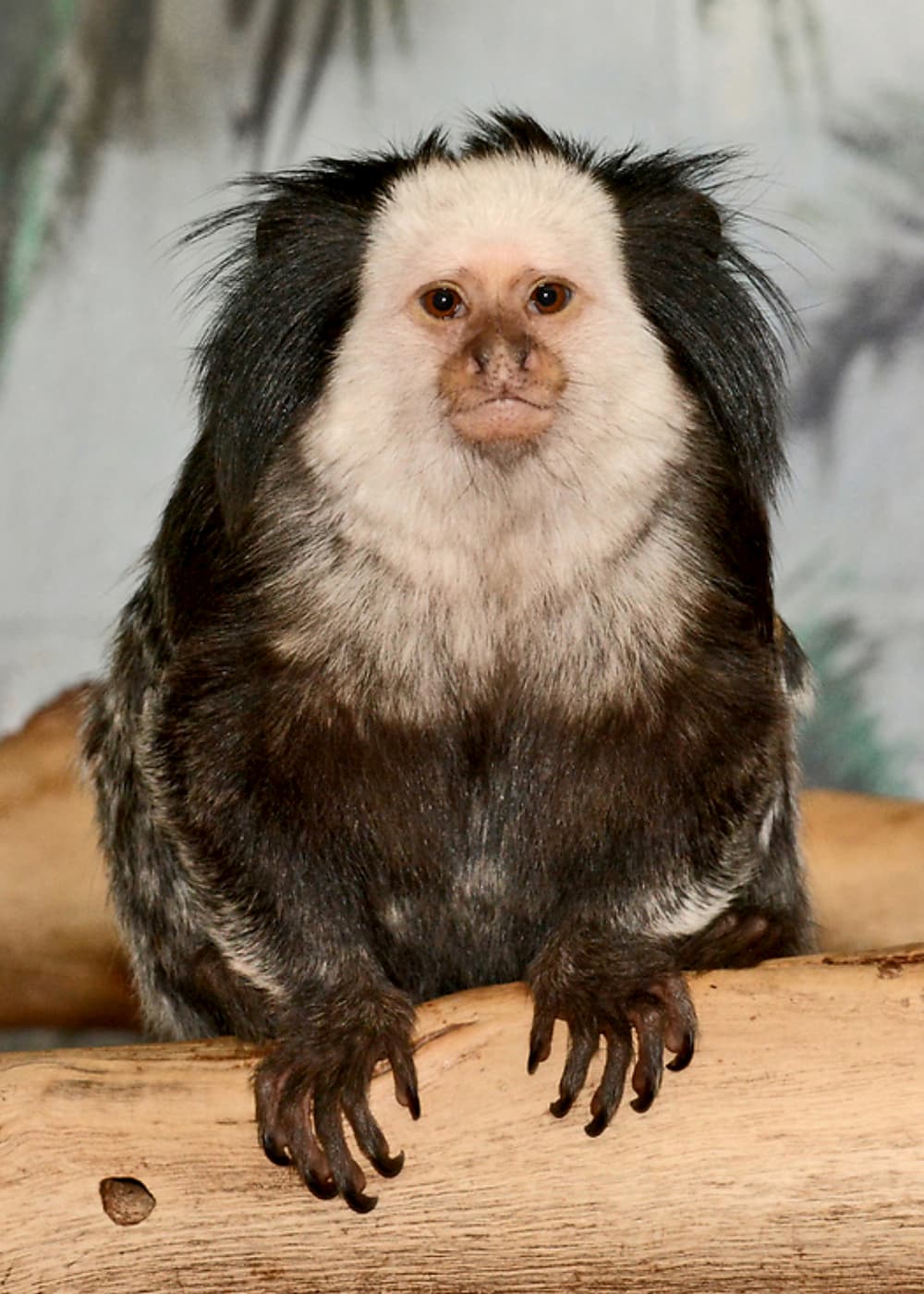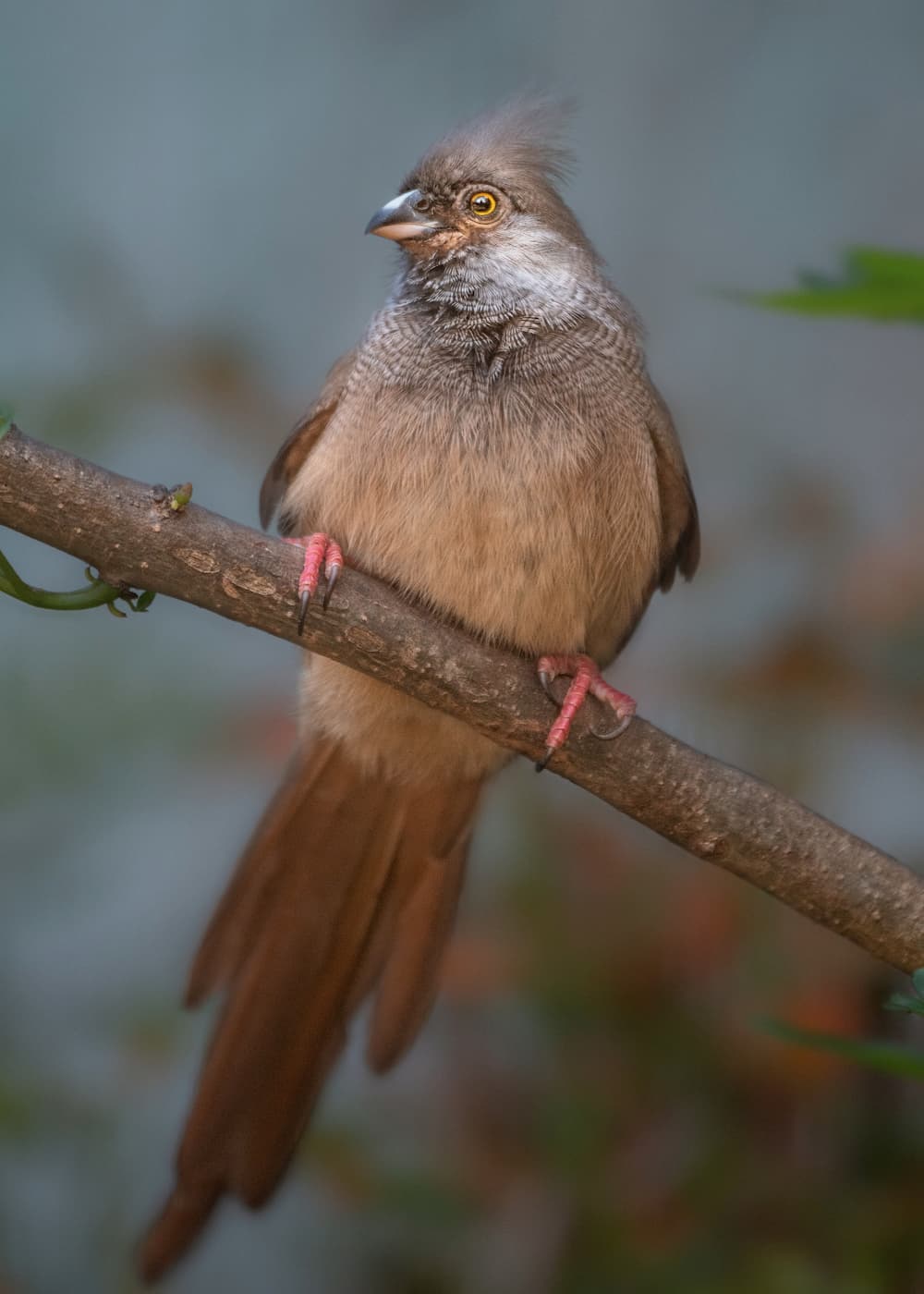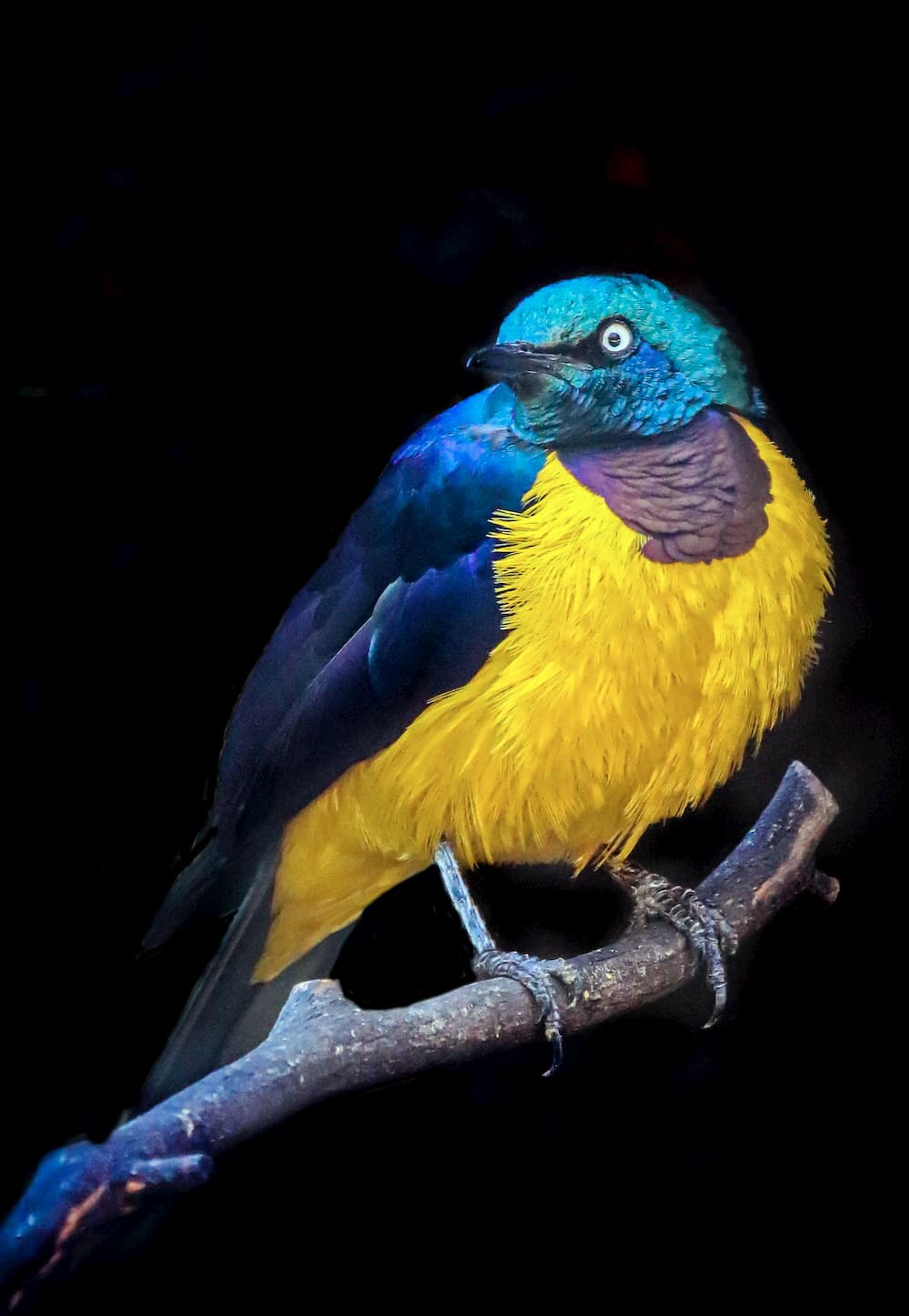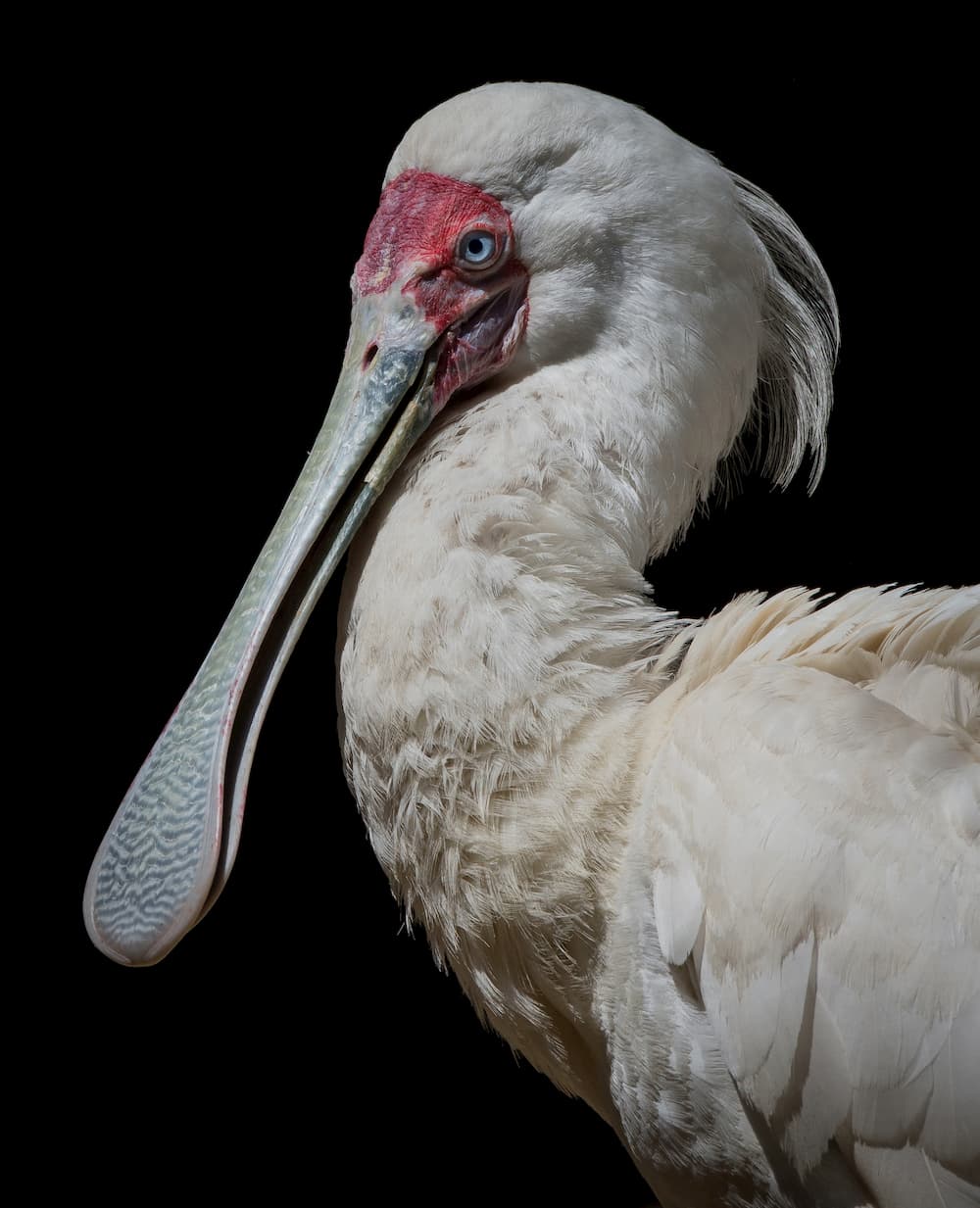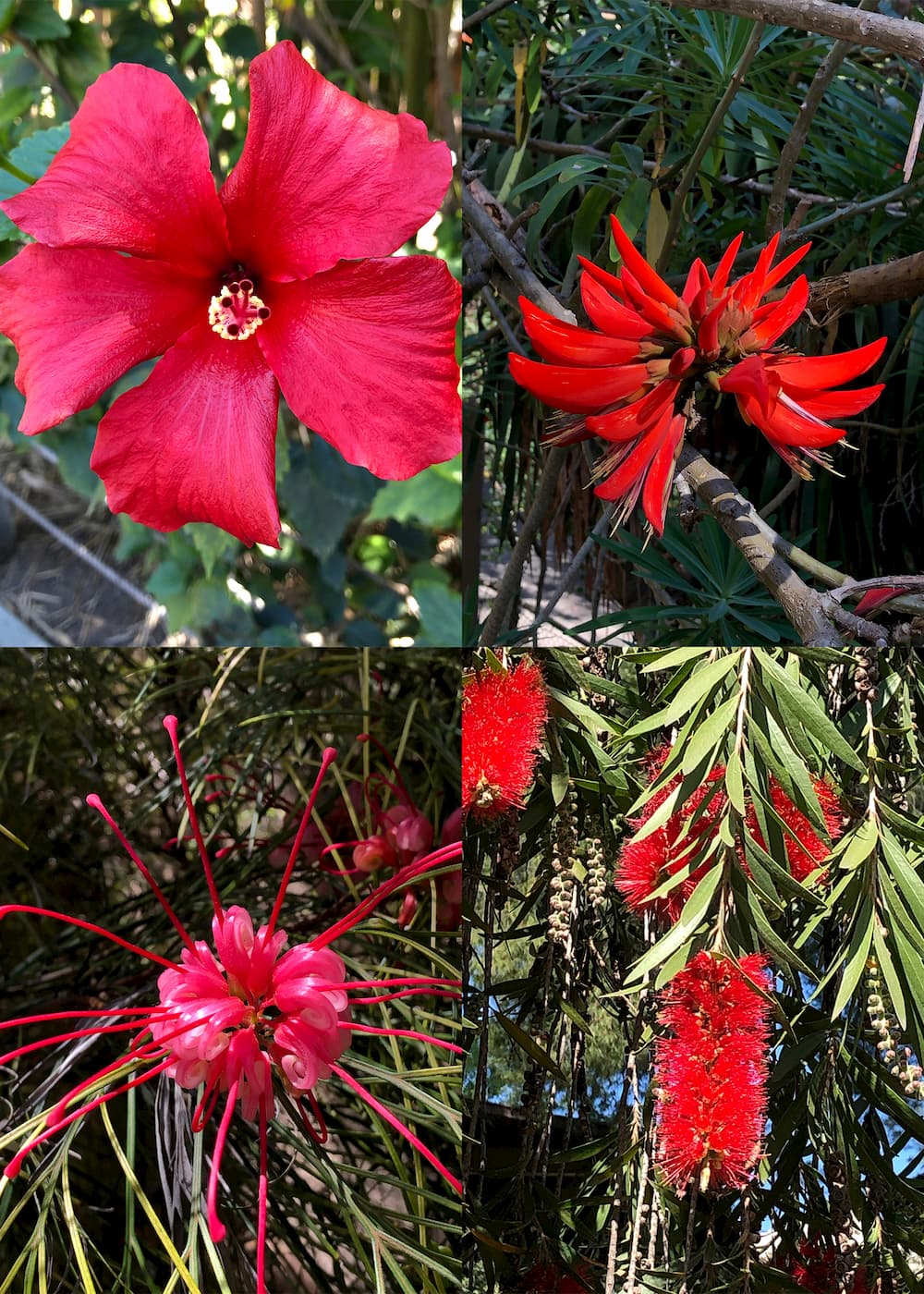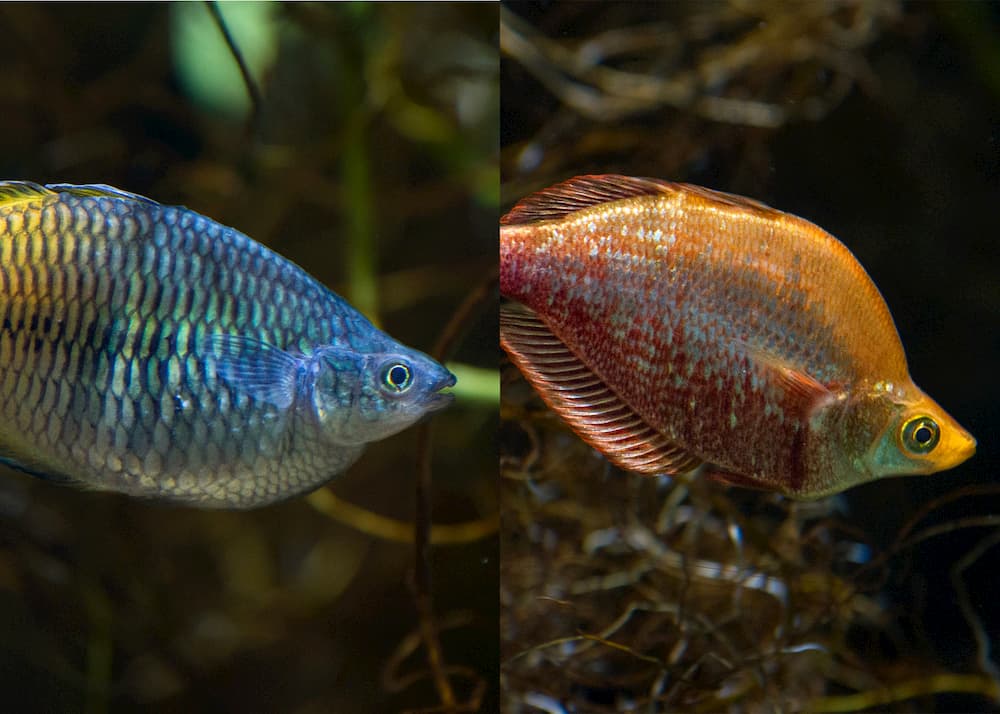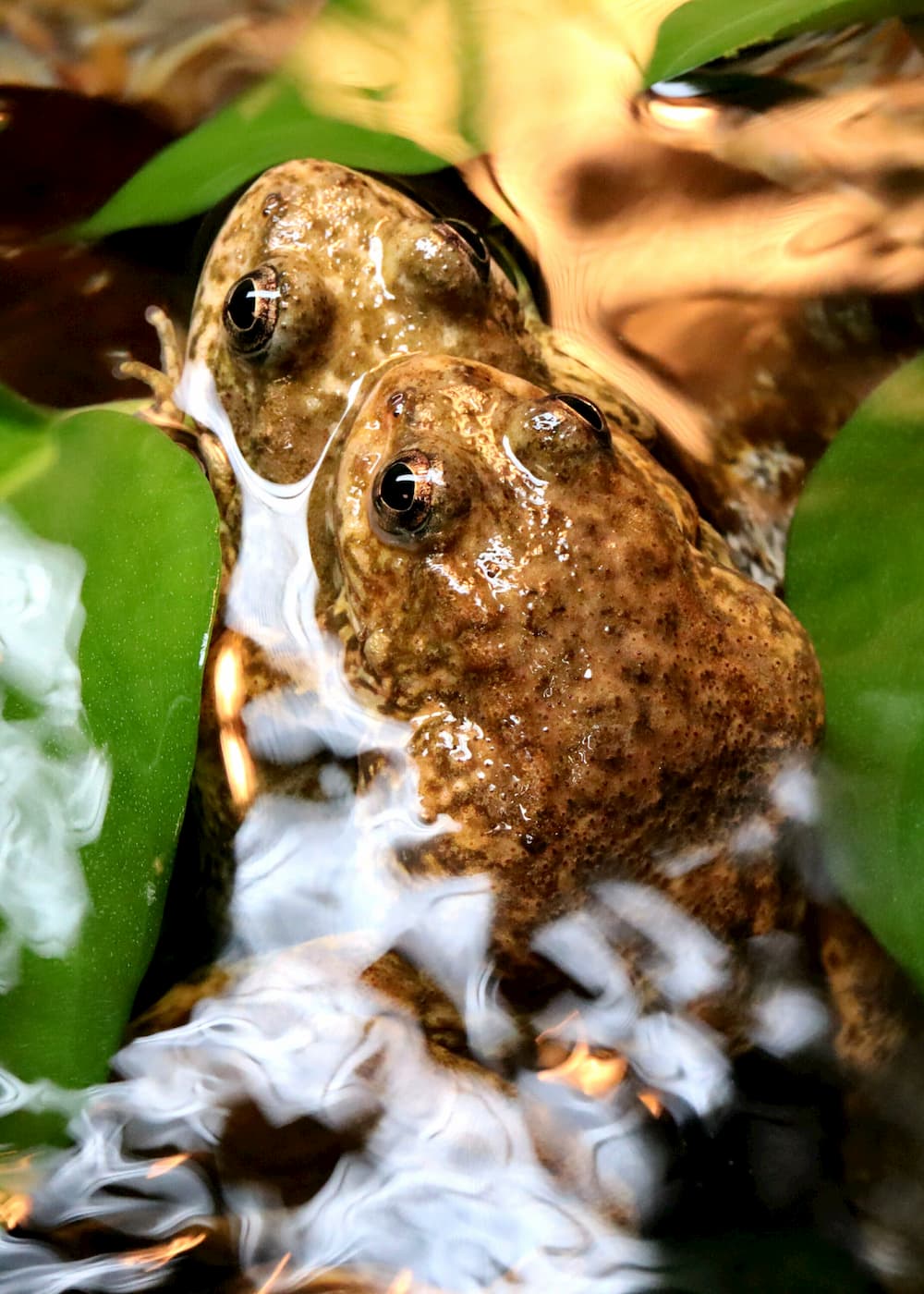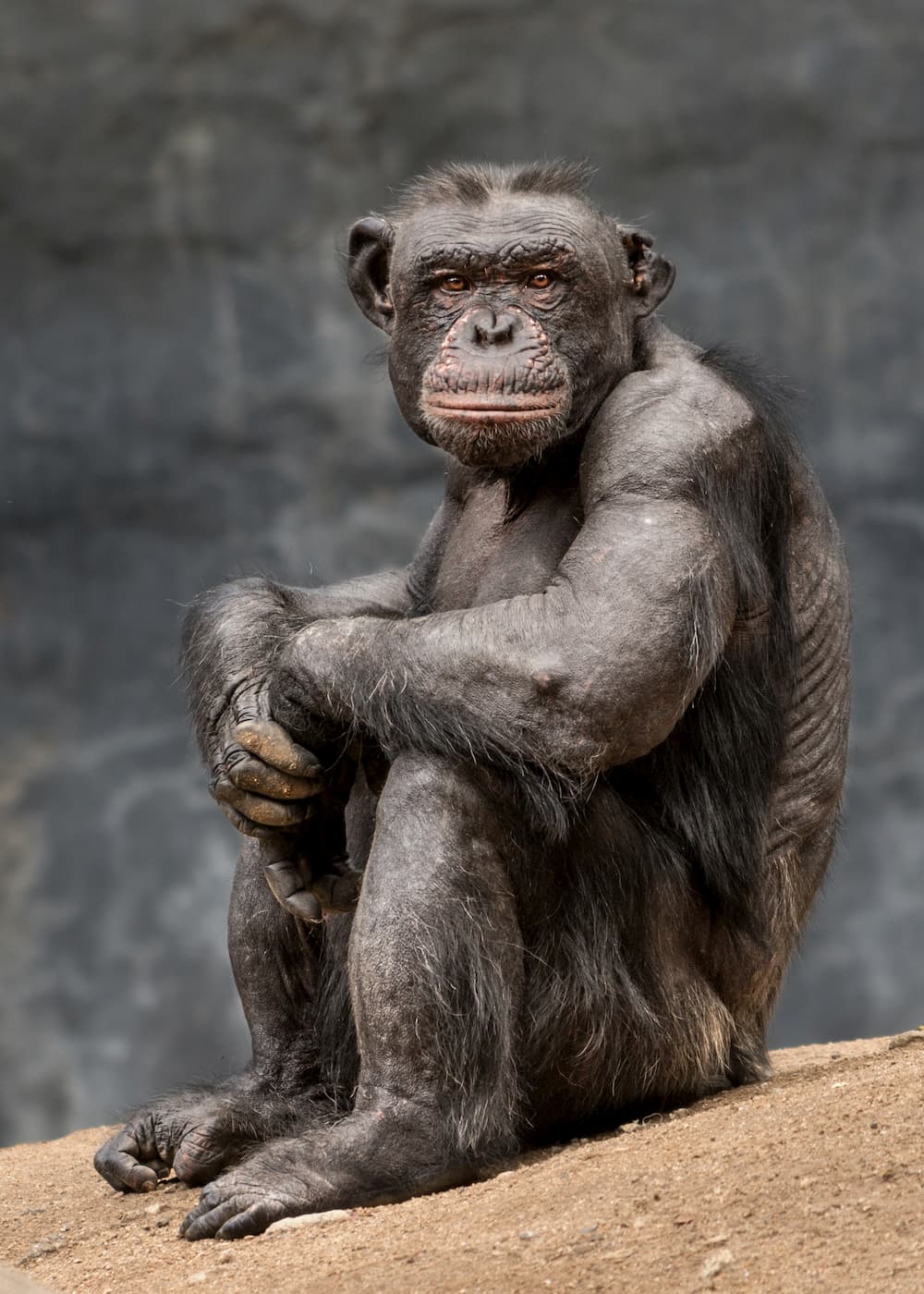New in the Zoo

Zoo Update with Tom Jacobson
May 20, 2020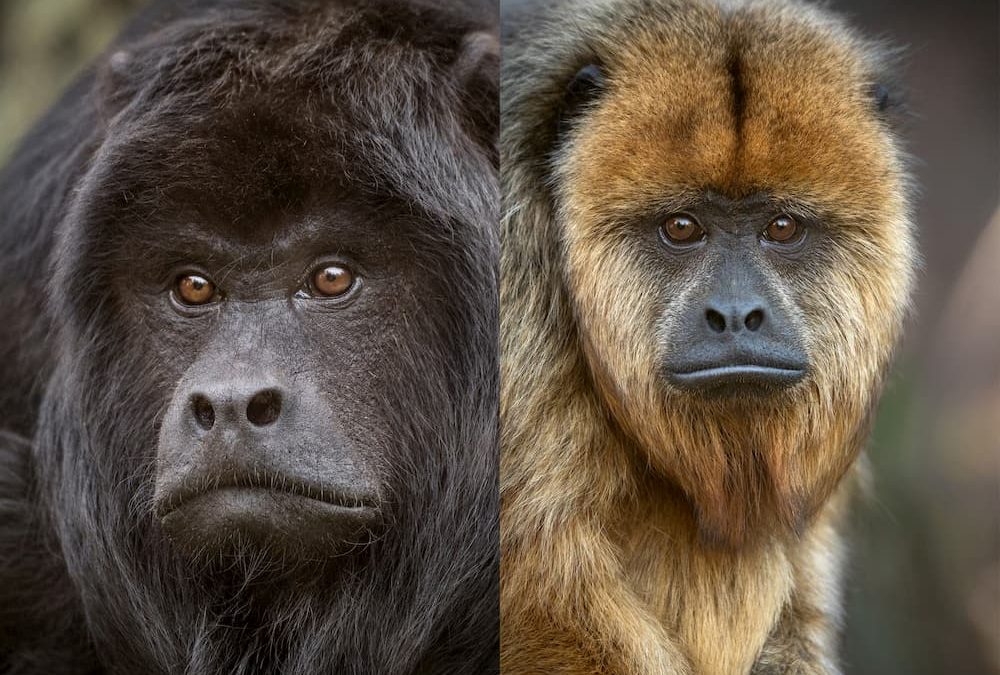
Male (left) and female (right) howler monkeys differ in color. Photos by Jamie Pham
We miss you as much as you miss the Zoo! Although no animal transfers or new acquisitions are in the works due to COVID-19 restrictions, many animal activities are still taking place and we’ll try to keep you connected with all that’s happening here. Look for Zooscape weekly while we are remaining safe at home.
As spring progresses, even more primate babies have arrived! In addition to the mandrill, gorilla, and sifaka infants, a black howler monkey was born on March 9 and two Geoffroy’s marmosets were born on March 31.
Black howlers are an excellent example of sexual dimorphism, meaning that adult males and females look different. The species is named for the males, which are black. The females are a golden brown color, as are their offspring, who do not develop adult coloring until they are between two and three years of age.
Geoffroy's marmoset Daisy gave birth to twins on March 31. Most primates generally give birth to offspring one at a time, but with marmosets, twinning is common. This success has been long awaited; with her two previous pregnancies, the infants did not survive. The babies are doing well with both parents caring for them.
Easter in the bird section of the Zoo saw an abundance of eggs! The following species are all “on the nest:” California condors, Cape thick-knees, Congo peafowl, red-billed blue magpies, green aracaris, Ross’s turacos, crested fireback pheasants, rock doves (at the World of Birds Show), and yellow-billed magpies. Even the cassowary has been laying eggs. A successful introduction of the male and female cassowary took place on April 14, so hopefully there will be fertile eggs in the future. Von der Decken's hornbills have chicks in the nest box and three speckled mousebird chicks have fledged and are doing well. As with many of the Zoo’s ambassador animals who have had the opportunity to walk out in the Zoo with their keepers, the ambassador flamingos were allowed to roam on the pathway in front of their exhibit. This was an excellent enrichment experience for the birds and an opportunity to record some video to share. Look for video footage on the Zoo’s social media channels.
Other avian arrivals include a golden-breasted starling and a yellow-naped Amazon parrot with an amazing vocabulary who will be joining the World of Birds Show cast. A male and a female African spoonbill arrived from the Dallas Zoo, and will join the two females who are residing in the African aviary.
Two large litters of Yarrow’s spiny lizards have hatched, and the babies will remain in a behind-the-scenes area until they are big enough for the Arroyo Lagarto outdoor habitat at the LAIR. If these little lizards look familiar, it’s because they are close relatives of the Western fence lizards that are common on Zoo grounds and in Southern California. Both of these lizard species are carnivorous and help control insect populations. Zoo Research Assistant Peggy Wu captured some video of a Western fence lizard at the Zoo doing just that. Warmer weather and rain can trigger termites to swarm. When this happens, a group of individuals from a colony develop wings and swoop into the air to mate and then form new colonies. You might see these in your neighborhood—they look like ants with wings and are often seen around decaying stumps or other wood debris. The mating season lasts only a short time, and is a tremendous feeding opportunity for lizards and other insectivores.
The plant world is full of vibrant colors. The pigments that produce vivid hues have other important properties as well. Anthocyanins are compounds that give foods such as red grapes, red onions, purple cabbage, blueberries, and pomegranates their distinctive colors, but also make them important antioxidant and anti-inflammatory foods. These same pigments are found in flowers that range from red to blue. Right now a dazzling array of flowers are blooming at the Zoo, among them these crimson beauties.
Several groups of tropical fish have arrived at the Zoo and are completing standard quarantine. Freshwater angelfish and marbled hatchetfish will eventually go to the Rainforest of the Americas exhibit. Lake Wanam rainbowfish (native to New Guinea) and Tami River rainbowfish (native to Australia-Indonesia) will be introduced to the LAIR’s Australasia aquarium.
Both groups of mountain yellow-legged frogs maintained by the Zoo’s herpetology staff remain in full-on breeding mode! As of April 8, they had produced a total of 12 egg masses totaling more than 1,000 eggs—and the season is not over yet.
Chimpanzee Jerrard passed away on March 22 after undergoing an MRI procedure for possible kidney failure. He was 30 years old. Ape Keeper Val Renzetti and Curator of Mammals Candace Sclimenti had both worked with Jerrard since he was a youngster. "Jerrard was quite a playful chimp who matured into an earnest alpha male with magnificent and very athletic displays,” comments Renzetti. “I'm very happy he had such a close companionship with fellow chimps Julie and Oliver. He will be missed by all."
"Jerrard was a young juvenile when I met him and was one of the first chimpanzees to accept me when I was a new keeper,” recalls Sclimenti. “He loved attention and enjoyed playing ‘scary chimp’ with us. He was always eager to participate in training sessions and we joked that he was a ‘training hog.’ Though he struggled in adulthood and we faced challenges with managing his aggressive side, he was a sweet chimp who stole our hearts. He was an important member of the troop and his loss is felt by all who knew him—humans and chimpanzees."


